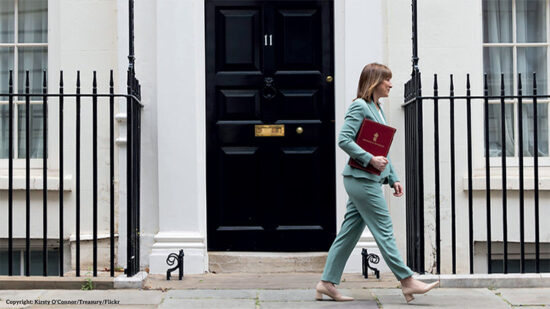Sterling
Sterling struggled early last week, hurt by falling stock markets and the resurfacing of sovereign debt issues in Europe. However, it managed to rise against the euro to touch its recent high around €1.2150 and touched $1.5983 against the dollar as the UK outlook remains comparatively positive.
Sterling continues to trade within recent ranges, both against the euro and US dollar. However with continued uncertainty in Europe, it is now increasingly looked on as a safe haven currency, and while the UK is not immune from European issues, we feel it will continue to improve against a stuttering euro and a break above the important resistance level of €1.2150 in due course. Against the US Dollar, another test of $1.6050 is also possible.
US Dollar
The US surprised the market on Easter Friday with some poor Non-Farm Payrolls numbers, coming in at 120k against estimates of over 200k. After some strong numbers in the previous months, the figures were disappointing and sent US stock markets sharply lower. The news set the tone for the European markets’ open last Tuesday, and a sharp fall in global stocks and a rise in Spanish and Italian debt yields saw the US Dollar initially gain across the board.
The dollar continues to benefit from its safe haven status, and with uncertainty in Europe still high, and a stuttering Chinese economy, it does not look like it will be under significant pressure in the near future. This week’s data will give some more insight, but we feel the dollar will continue to range trade against all the major currencies, although sterling could push above $1.6000 again soon.
Euro
It was a short but very active week for the euro, with last week’s poor US Non-Farm Payroll numbers setting the early tone, and a resurgence of sovereign risk issues in Europe last Tuesday helping push the currency down. Soothing words from European Central Bank (ECB) officials stopped the rot, but the damage has been done and the markets will remain nervous for a while until confidence can be restored.
The single currency fell sharply last Tuesday following the weak US data and Bond problems in Europe to touch a high of €1.2153 against the pound. The €1.2150-60 area is proving a strong resistance but a break could see sterling rise quite sharply towards 1.2392, but for now it is holding.
EUR/USD touched a low of $1.3035 early last week, but the dovish Fed comments and benign inflation have seen the dollar give back the lost ground to stay within recent ranges above $1.3100.
New Zealand Dollar
The kiwi dollar struggled early last week after Japan decided against an expansion of its stimulus measures, before dovish comments from US Federal Reserve members turned the tide.
Another move higher still seems the more likely direction, but a period of consolidation between support at NZ$1.9112 and NZ$1.9664 may occur first.
Australian Dollar
The GBP/AUD rate climbed to a 2012 high of A$1.5500 last week before falling back more than two cents, as concerns about growth in China and Japan were outweighed by better domestic employment data and increased prospects for more monetary stimulus in the U.S.
The better domestic data and improved risk appetite across the financial markets should halt the Aussie’s slide for the time being, with A$1.5478 providing resistance and support at A$1.5301, with A$1.5124 below that. This may well prove to be a temporary reprieve however, before the pair makes another push towards A$1.6000.
Canadian Dollar
The Canadian dollar was approaching C$1.6000 versus the pound and hit C$1.0050 against the US dollar through the middle of the week on Bank of Canada jitters before the prospect of further quantitative easing, and therefore economic growth, in the US reversed the trend and saw the CAD finish up close to where it started the week.
GBP/CAD still looks more likely to head up towards C$1.6000 again at some stage, although further consolidation may be needed first as GBP/USD struggles to push higher. This week’s Bank of Canada statement could be key.
USD/CAD resistance is now at C$1.0050 to C$1.0070 with any close at or above that level being a sign to exit long Canadian dollar positions with the rate then likely to head back towards C$1.0405.
Chinese Yuan
The yuan traded in a narrow range from 6.3050 to 6.3100 for much of the week before a sharp appreciation earlier today following the PBOC decision to set the reference rate below 6.3000 which precipitated a dip towards 6.2900 before retracing to close back above 6.3000.
Despite the dip seen earlier today, the CNY rate looks likely to remain in the 6.3000 region for the foreseeable future, especially as the situation in Europe once again gives cause for concern.
Japanese Yen
The yen strengthened versus the US dollar last week but remains largely unchanged versus the pound as the divergent outlooks for monetary easing saw investors revise their positions accordingly.
USD/JPY tested the March lows of 80.60 last week before bouncing, although it will take a break above 81.90/95 to confirm the upward trend has resumed. GBP/JPY will therefore likely struggle to get much above 130.00 until that happens.
South African Rand
The rand was struggling early last week on global growth concerns and Europe’s debt crisis, testing above R8.00 versus the dollar and R12.75 against the pound, before better domestic data saw it recoup much of the lost ground.
The rand’s gains back towards R12.50 look to be corrective rather than a reversal of the trend. Sovereign debt in Europe still looks wobbly and the news on Chinese growth and concerns about the outlook for the US will continue to depress demand for commodity currencies.
We therefore expect the rand to re-test the week’s highs at R12.75 against the pound and to make another push above R8.000 against the dollar.








